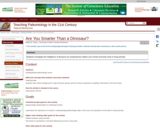About this book
Origin story
I (Erin) began this book project after participating in the Open Pedagogy Incubator hosted by the NC State University Libraries in 2020, with the goal of making my course materials – and information about Applied Ecology – more broadly accessible to students, educators, and the general public. Rather than impose my sole voice, perspective, and biases, I restructured my course assignments to enable student creation of the content you will encounter in this book. The assignments are open-ended and open-world, motivating students to collaborate with each other and to seek knowledge beyond the classroom, and thus embody core characteristics of the discipline of Applied Ecology as well as Open Education and Universal Design for Learning. I hope that by centering student voices and by highlighting diverse scientists, research systems and ecosystems, this work empowers the reader and highlights the relevance of Applied Ecology in our everyday lives.
Intended use
This book is formatted to provide information about key ecological principles, concepts, and processes, explored and applied across various contexts. The text can be used as a foundational or supplementary text for ecology courses, or as a standalone reference for students in formal academic settings or beyond.
The Vocabulary terms at the beginning of each chapter are listed in the order that students will encounter them while reading the blog-style summary for that chapter. The Glossary lists all terms in the entire book in alphabetical order, for quick reference as needed.
We have provided an appendix with skeletal outlines that students can use to guide their notetaking. I also intend to compile a companion volume for educators, containing templates for each assignment used to guide the student works presented here.
Accessibility
We use sans-serif fonts to facilitate readability in digital format and by readers who are neurodivergent. We also support screen readership through alt-text images.

















